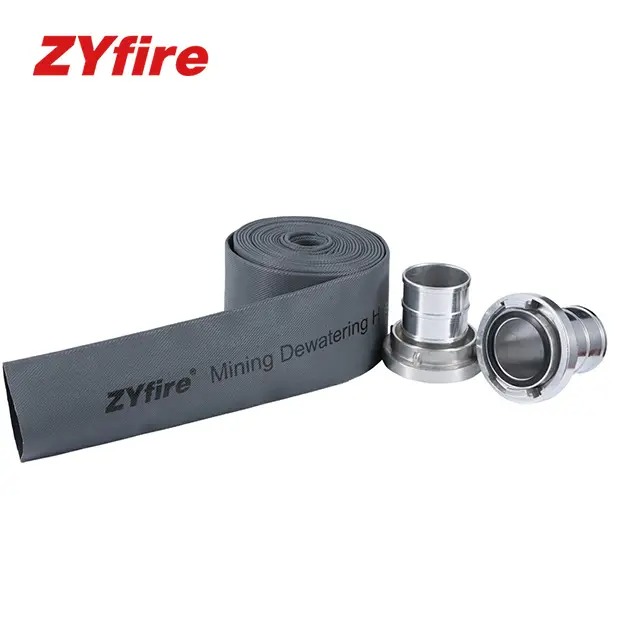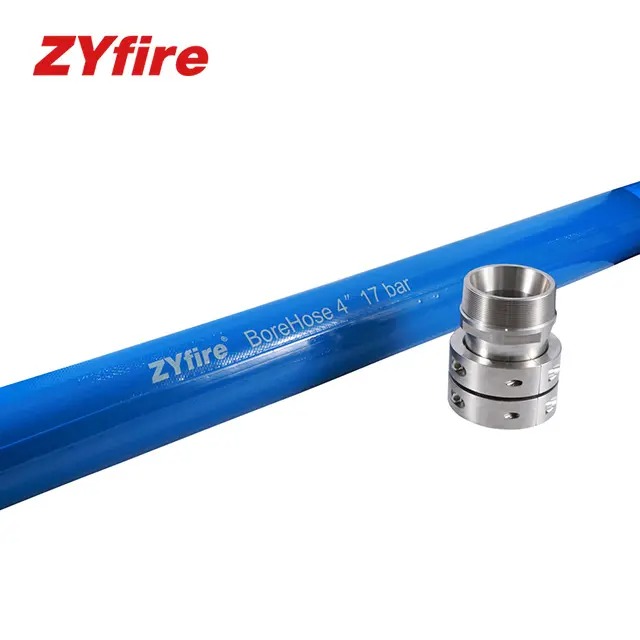- All
- Product Name
- Product Keyword
- Product Model
- Product Summary
- Product Description
- Multi Field Search










Mining is a high-demand, high-risk industry that requires robust and reliable equipment. Among the lesser-known yet absolutely vital components in mining operations are mining hoses. These hoses are not mere accessories—they are critical conduits used to transport water, slurry, chemicals, and even air in harsh mining environments. A mining hose must be engineered to endure extreme abrasion, pressure, temperature fluctuations, and corrosive substances. But what exactly is a mining hose, and why does it matter so much in the mining sector?
This guide aims to uncover the intricacies of mining hoses—what they are, their types, how they are used, what features to consider, and frequently asked questions from engineers and site managers. Whether you're new to mining or an experienced operator, understanding mining hoses can improve operational efficiency and safety.
A mining hose is a heavy-duty industrial hose designed specifically for use in mining operations. Its primary function is to transfer various materials such as water, slurry, air, hydraulic fluids, or chemical agents from one point to another within the mine. These hoses serve both surface and underground operations, depending on the mining setup.
Unlike general-purpose hoses, mining hoses are built with reinforced materials—typically a combination of synthetic rubber, thermoplastic compounds, and multiple plies of textile or steel wire reinforcement. This rugged construction ensures longevity and minimizes the risk of failure under demanding conditions.
Mining hoses differ from conventional hoses in several key ways:
High Abrasion Resistance: Mining environments often contain sharp particles and rough terrain, making abrasion resistance critical.
Flexibility Under Pressure: Despite their strength, they need to remain flexible for maneuverability.
Chemical Resistance: Exposure to harsh chemicals demands chemically inert materials.
Pressure Ratings: Some hoses operate under very high pressure, especially when used for dewatering or hydraulic applications.
Mining hoses come in various configurations tailored to different uses. Understanding these variations can help you select the right hose for your operation.
Slurry hoses are designed to transport abrasive slurry, which is a mixture of solid particles and liquid, typically water. The inner lining is usually made of extra-thick natural or synthetic rubber to withstand abrasion. These hoses are often used in mineral processing and tailings transport.
Water hoses are used for transporting water for dust suppression, firefighting, and general fluid management. They are typically lighter in weight but still reinforced to handle variable pressures and outdoor conditions.
Air hoses are crucial for powering pneumatic tools or ventilating underground tunnels. These hoses must be resistant to pressure drops and external wear and tear.
When it comes to transporting chemicals or fuels, the inner tube of the mining hose must be chemically resistant to prevent breakdown or contamination. These hoses are often used in fuel delivery systems or chemical processing in mining facilities.

Choosing the right mining hose is not just about selecting a tube—it's a decision that can impact safety, efficiency, and maintenance costs. Here are the essential features to evaluate:
| Feature | Description |
|---|---|
| Inner Liner Material | Should match the type of material being conveyed (e.g., rubber for slurry, PVC for water) |
| Reinforcement Layer | Textile or steel cord for strength under pressure |
| Outer Cover | Resistant to UV, ozone, abrasion, and weather conditions |
| Flexibility | Crucial for installations with tight bends or frequent movements |
| Working Pressure | Must be rated above the operational pressure for safety |
| Temperature Range | Should tolerate both extreme cold and heat, especially in open-pit mining |
Mining hoses are employed in numerous applications throughout mining sites, ranging from basic utility to complex material transfer. Below are the primary applications:
In both underground and surface mining, water must be removed to keep the working area dry. Dewatering hoses are essential for this task and must be highly durable and kink-resistant.
To meet environmental and safety regulations, water is sprayed using mining hoses to suppress dust during drilling, crushing, and transportation of materials.
Many mining tools and machinery are powered by hydraulic or pneumatic systems. Hoses are used to transfer pressurized fluids or air to these tools, ensuring smooth operation.
Mined material often needs to be transported as slurry to a processing facility. Slurry hoses facilitate this process and must resist abrasion and high pressure.

The lifespan of a mining hose varies depending on material quality, environmental exposure, and frequency of use. On average, a high-quality mining hose can last from 12 months to 5 years. Regular inspection and maintenance can extend the hose's life significantly.
Yes, many mining hoses are designed to be repairable. Patches, couplings, or even partial hose replacements can be performed depending on the damage severity. However, critical failures near the hose ends often require full replacement.
While there are some industry guidelines, mining hoses are typically custom-built or selected based on specific operational needs. Pressure ratings, diameter, length, and lining materials are often customized per project.
While both serve similar fluid transfer functions, mining hoses are generally heavier, more rugged, and built for extreme conditions, unlike general industrial hoses that are used in more controlled environments like factories.
Mining hoses may not be the most glamorous equipment on a mining site, but their importance cannot be overstated. They are the arteries of mining operations, transferring essential materials that power processes, support tools, and maintain safety. Investing in high-quality hoses—and understanding their applications—can greatly reduce downtime, enhance productivity, and promote operational safety.
Whether you're setting up a new site or upgrading your current equipment, give proper thought to your mining hoses. They're not just pipes—they're lifelines.